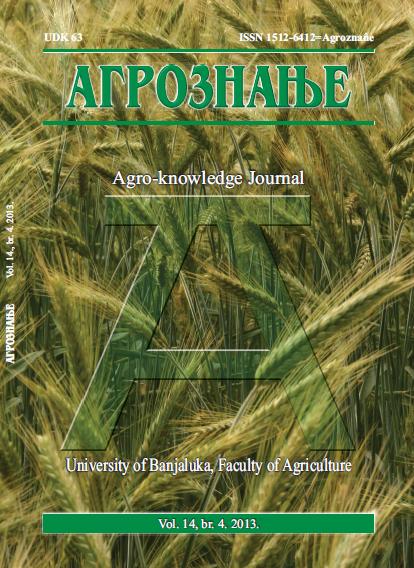Effect of Liming on Grain Yield of Field Peas
DOI:
https://doi.org/10.7251/AGREN1304631BAbstract
Growing field pea for grain and forage is an integral part of the livestock development strategy, due to its importance as a good source of protein in improving milk and meat production. This is of particular relevance to livestock producers in Central Serbia who experience problems in alfalfa production on acidic soils. As a legume, field pea also plays a valuable role in crop rotations. More recently, field pea has been used as an important crop in organic and sustainable farming systems. Under non-irrigated conditions, grain yield of spring pea cvs. ‘NS-Junior’ and ‘Javor’ was evaluated in 2011 and 2012 on an acidic soil receiving amendment applications. A field trial was established in Čačak (43°54'39.06" N, 20°19'10.21" E, 246 m a.s.l.) on an alluvial soil acid in reaction (pHH2O 4.8). The experimental field was fertilized with 300 kg ha-1 N15P15K15. The treatments used included an unfertilized control and liming at 3t ha-1 and 6t ha-1. The experiment was laid out in a completely randomized block design with four replications. Plot size was 5m2 (1x5m). In both years, the average grain yield of cv. ‘NS-Javor’ was significantly higher than in cv. ‘Junior’. No significant differences were observed between the control and the lime treatments. Grain yield in both years was significantly below the genetic potential of the cultivars tested, mostly due to deficient rainfall and severe soil and air drought conditions.Downloads
Published
2013-12-27
Issue
Section
Articles

